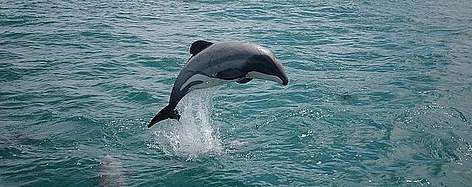DAY 3: Taking Action
Activity 1: Predator Free 2050 – A Call to Arms [4 points]
There is currently a huge drive to get rid of all predators from New Zealand. Predators are animals that, in some way, damage our natural environment. Many organisations are working hard to accomplish this goal.
Click on the links below to watch videos about three of the current projects operating to make New Zealand ‘Predator Free by 2050.’
Predator Free Video #1: Cacophony Project
Predator Free Video #2: Taranaki Mounga Project
Predator Free Video #3: Zero Invasive Predators (ZIP)
On your blog, tell us which one of the videos you liked the best and why..
I really liked the first video because the guy in the video is not only trying to catch animals but mainly to get as many on camera as possible. He is also trying to develop the first stages of artificial intelligence
Activity 2: Protecting the Most Vulnerable - Fact or Fiction? [4 points]
Here in New Zealand, we have a native dolphin, the Māui Dolphin, that is on the verge of extinction (disappearing forever). As of this year, there are only 63 Māui dolphins left and people predict that they will be extinct by 2033. Environmentalists are working hard to save the dolphin because it is such a special and unique animal. To learn more about the Māui Dolphin, please follow this link. Once you have learned more about the dolphin, it is time for you to share your learning with us. 
On your blog, post three facts that you learned about the Māui Dolphin that is true. Then, using your imagination, create three more statements about Māui dolphins that are not true (i.e. false). Please don’t tell us which of your statements about Māui Dolphins are true and which are false. It will be the job of the students and staff who read your blog to figure it out.
Six Maui dolphins facts
- Maui dolphins are the smallest dolphins in the world.
- Female Maui dolphins are a bit bigger than the male dolphins
- Maui dolphins use echolocation to find their foods.
- Maui dolphins Live longer than humans. Their lifespan is 200 years.
- Maui dolphins are very scared of small fishes
- Maui dolphins are the strongest dolphin species in the world.
Activity 3: The Power of Ten [10 points]
Sir David Attenborough is a famous TV presenter from England who loves nature and the natural world. He has spent his career filming documentaries about the planet and working hard to protect it. In a recent interview, Sir David was asked to reflect on all that he had learned and to imagine that he had suddenly been given the power to save 10 animals and/or plants from extinction (disappearing forever).
3. Solenodon
Let’s imagine that you had the same power and that you could save 10 species (animals or plants) from extinction. Who would you save? If I had the choice I would probably save animals like the elephant, white tiger and rhinoceros because they are unique and have lived for centuries on earth. I would also like to save some of my favourite flowers including hydrangeas and calla lily flowers. What about you?
Left to right: White tiger, Hydrangeas, Calla Lily
On your blog, list 10 species (animals or plants) that you would protect from extinction. For each one, give a reason as to why you think it is important to protect.
1. Giant Panda. The reason why I would protect the giant panda is that it looks fluffy and because their are only around 2060 pandas living in the wild.
2. Sumatran tiger. The reason why I would protect the Sumatran tiger is that it is Critically Endangered and is only 441 to 679 individuals left.
3. Tree-kangaroo. The reason why I would protect the Tree-kangaroo is that it looks like a fluffy toy. Another reason is that Tree-kangaroos are Critically Endangered and only have 50 individuals remaining.
4. Western Prairie Fringed Orchid. The reason why I would protect the Western Prairie Fringed Orchid is that it is a rare flower and it is a threatened species.
5. Bald eagle. The reason why I would protect the Bald eagle is that it is a logo to one of the most famous countries in the world.
6.Sea turtle. The reason why I would protect the Sea turtle is that there is about 500,000 Sea turtle left in the world.
7. Bumblebees. The reason why I would protect the Bumblebees is that pollinate the flowers and plants and with any plants, there less oxygen.
8. Prairie dog. The reason why I would protect the prairie dog is that it provides food for predators and shelter for other burrowing animals.
9. Sea otters. The reason why I would protect the Sea otters is that it is very cute and it also eats Sea urchins.
10. Tiger Sharks. The reason why I would protect the Tiger Sharks is that it helps maintain healthy seagrass beds by controlling populations of animals.